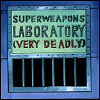
Change is in the air, and pundits believe that what happened during the Wisconsin protests will occur on a national level. I don’t know the future, but I do know the past. If what happened in Wisconsin, North Carolina, and Kansas are any indication, then we are in for a long night. More concerning to me, however, is the blatant acts of misogyny, racism, and xenophobia that have been committed in the past couple of weeks, and the fear that many of my friends and family have. No pundit, no band-aid can fix that. People are afraid and, quite frankly, they should be. White supremacists, whether they are simply sabre-rattling or not, are not “normal” as so many have loudly proclaimed, nor do they deserve to be understood. Hate, my dear readers, is not a partisan issue. It’s a force of nature, like love. The issues to acknowledge the depth and breadth of humanity and give everyone equal rights is a human rights issue. Reproductive rights. Gender. Sexuality. Race. All human. And yet, the idea that we’re not all created equal is being entertained–not in 1950 or 1960 or 1980–but now. Right now.
How did we get here? I see a lot of fingers being pointed, to understand what happened to lay the blame. Someone has to be responsible or somebody is riled up right now, and someone else needs to fix it. I don’t care about any of that, because I’ve been there before both personally and politically. If the divisiveness felt in Wisconsin is any indication, then yes it will be a long night. What happened here, is that people were forced to pick a side. It didn’t matter where your beliefs were on the spectrum, or if you were moderate politically, or if you were dispassionate about what was happening. You were either “one of us” or “one of them.” That, I fear, is what’s coming and everyone is to blame for that. Everybody. However this national movement, for lack of a better word, does not seem like it’s going to be a fight about labor laws, it’s shaping up to be a fight about retaining and ensuring that all humans have the same rights. That cuts far more deeply that what’s in someone’s wallet, and already I’m seeing people double down and say affected folks are “over-reacting”. Which is not true. If someone threatens me because I’m a woman, tomorrow I can’t wake up and *poof* not be a woman anymore. These threats are taken as legitimate, because it’s not the first time we’ve been threatened or hurt.
Right now, I don’t care about blame, because I can’t. What I do care about, however, is how to be resilient in the face of despair, how to rise up and seek the dawn, how to learn from our mistakes, how to connect with others. As it turns out, I do know a little something about resilience. This, beyond the stories I tell or the games I make, is what I can offer folks who have never experienced anything as awful as being hated or denigrated for your soul’s container, your body, the flesh and blood and bone you had no decision or hand in making.
I don’t know if this post will be the balm you need or not, but I wanted to share this anyway–even if it reaches one person that matters to me. So, here are ten things I recommend doing next to prepare yourselves for a long night ahead. If nothing happens? If it’s “politics as usual”? Great! Fantastic! I’m thrilled! If you think there’s even a small chance that your rights will be at risk, however, it can’t hurt to ensure you build those tools of emotional resilience now. They could help you as they did me–no matter what comes next.
1.) Decide where you stand. Remember what I said about being forced to take a side? Having control over where you stand will help give you your personal power back. It also requires listening to people impacted by rights changes, to understand what’s at risk, and setting aside your personal pride–especially if you’re not affected. No, you may not know now how far you’re willing to go to fight for your beliefs, but having a foundation based on your ethics/morality instead of politics will help you set aside the barriers that come from being labeled as one thing or another. Those of you who know where you stand, you can take that a step further. Join the groups that agree with your stand. Buy from places that donate to your similar viewpoints, too. Why? Because if you don’t, someone else who disagrees with you will. Apathy, “it won’t happen to me”, and the believe that human rights violations could never happen in America (even though they already have) further inaction. If you truly believe something, back it up. Now’s the time. Even if it’s five dollars a month!
One last note here, because it’s important. Taking a stand also means recognizing confirmation bias, and the misinformation that is rampant right now. There are people who, for a multitude of reasons from making money on ad revenue to deliberating spreading misinformation, that do not fact check because they are relying on people to agree with them no matter if it’s true or not. Be vigilant about the truth and know that there are people who will manipulating innocuous information not to get you to switch “sides”, but to force you to hate people who disagree with you even more. Remember clickbait exists. Emotions get clicks online, and strong emotional reactions make certain people money. The best way to get them to stop making clickbait? Bankrupt them, by not reading or sharing that shit. Seriously.
2.) Find connecting threads. I have someone I’ve pledged to check in wherever I’m active online, and offline I’m rebuilding my so-called zombie apocalypse friends. This is tough for introverts pretending to be extroverts like myself, which is why I’m also figuring out how/when/where to get back into performing. I’ve also got a list of places I hope to volunteer/visit, etc. pending my next point. The worst thing you can do, is to isolate yourself. If you need to, do it for a little bit, but don’t go silent for months on end. Your perspective will shift–especially now–and that’s the real danger, because when that happens depression and other things can set in. Unfortunately, it’s called “slip into depression” for a reason. Connecting threads will help prevent that.
3.) Identify anchors. An anchor is Monica-speak for something that you hold onto when times are tough. It can be a simple ritual, a song you listen to, or something physical you have or wear. When you are feeling awful, light a candle. Say a prayer. Listen to a song that makes you happy or write in your journal or grab a worry stone or get a massage or whatever it is you need to ground yourself. (Or, a combination of things.) Anchors build security, and that can help if you’re feeling uncertain.
4.) Establish mundane activities. Basically, mundane activities are what grounds you in the real world. No matter what happens, you still need to eat. Still need to wash your clothes, your car, your dishes. These mundane activities are important, because once they go–your mental health can go. Routines can also be a boon here, too, because they help establish discipline. It’s also an easy way for you to signal a partner, friend, roommate, etc. to check up on you. “Hey, I’ve committed to making the bed every week day. Can you give me a heads up if I skipped it, or remind me to keep at it?”
5.) Ignore the flies. There are a thousand and one distractions. Who’s dating who with what. Which celebrity is divorcing who. While some of this may sound like the aforementioned point four, the more shit you have to deal with, the more you can’t deal with. Something has to give, and that’s usually what either isn’t important to you or what doesn’t affect or impact you personally. Not everyone deals with shit going bad the same way. Sometimes, some people will create more drama instead of dealing with their personal bullshit. I’m saying that long-term, that will hurt more than help.
6.) Establish a goal for yourself that has nothing to do with what you’re worried about. Maybe you want to save up for a car, get your nails done, play new games, read any number of books, train for a marathon. Do something for yourself, even if you get great pleasure from giving to other people. This is so important, I can’t even begin to tell you where or why or how. So many people, especially women, who have been through some shit feel guilty every time they give to themselves. Self-worth is tricky to manage, but abusers often attack your self-worth so you don’t take care of yourself. By making yourself a priority in some fashion, even if it’s tiny, you’ll be better able to help others in the long run.
7.) Use your talent. Knit? Make jewelry? Sing? Do carpentry? Do it. Do it, because a physical form of self-expression is another way to connect to yourself and the world around you. It doesn’t matter how good you are, who you share it with, or why you need to do it. I believe, with all my heart, that art can change the world–but it starts with each of us. There are so many different ways to engage with your art nowadays, and that’s great! But, each piece you make is a little bit of yourself out there in the universe. That’s a physical way of screaming into the ether that yes, you are here and present.
8.) Get thine house in order. Whatever you’ve been procrastinating? Stop. Seriously. Just stop. Make a list of what you want to do, and do it. Why? This is another way of taking your personal power back. Remember: when you feel helpless, you will seek ways to get that power back in healthy and unhealthy ways. Focus on your own life first, because the actions you take will directly impact you and you can see the results. Then, once your oxygen mask is secure, then you can help others and share an emotional burden or whatever it is you volunteer to do. Often, getting your shit together will generate a mixture of other emotions you need to go through, too. This, by far, can be the hardest thing to deal with, because you might not remember how much you have to do until you start doing it.
9.) Remember kindness is not a weakness. Random acts of kindness, doing something nice for strangers, giving to friends who wind up not being your friends… Look, everyone responds to kindness differently. Some won’t acknowledge/respect it. Others will look down on you with pity. Others will appreciate it at that moment, or later on when they need to remember there’s somebody out there who is kind. Kindness, giving, etc. these are not weaknesses but they are viewed as such because they’ve been feminized and, for many, are an expectation when a gentle, beautiful soul is encountered. What I’m saying, is that none of that matters. It doesn’t matter if the 20-something year old looks at you with disdain because they mistakenly think you have no friends. It doesn’t matter if your friends think you are too nice, or if your enemies believe you’re weak. If being kind is who you are, don’t give in. Be kind anyway. Reach out anyway. Why? Because that’s who you are, and that’s all that matters.
10.) Establish boundaries. Whoo-eee. That’s a big’un. Look, people are infinitely complicated. Some people you can take in small doses. Some people you might agree with on an ideological basis, but you don’t get along with on a personal level. That’s all normal. But, it helps to know what boundaries you have in place to deal with things when shit goes south. That abusive boyfriend or family member. The news. Internet trolls. Don’t wait for someone to figure out your boundaries for you; determine that for yourself. And, don’t be afraid to recognize when friendships are failing or if something it’s working. Evaluate them, and if they can’t be repaired decide for yourself if you need to say good-bye.
All of these things I’m recommending circle back to your identity, your personal power, your connection to your community which you will need should the overall mood of this country turn dark. I can’t possibly know every situation there is to know, or what it is you want to do now and going forward. What I do know is that fear–that visceral, tangible moment of panic–that someone else has control over you is what will force you back into the darkness. By all means, be afraid. If you are afraid, then be afraid. Then, acknowledge that fear and use it to love and live and love some more. No one, not anyone, can take your personal story away from you–no politician, no pundit, no one. And, they cannot take away the best parts of you, nor can they control the worst, either.
What you do next, is all up to you. But, I believe in you. I really do. Thanks for listening to me pontificate. Now let’s kick some ass, and show people what we’re really made of.




